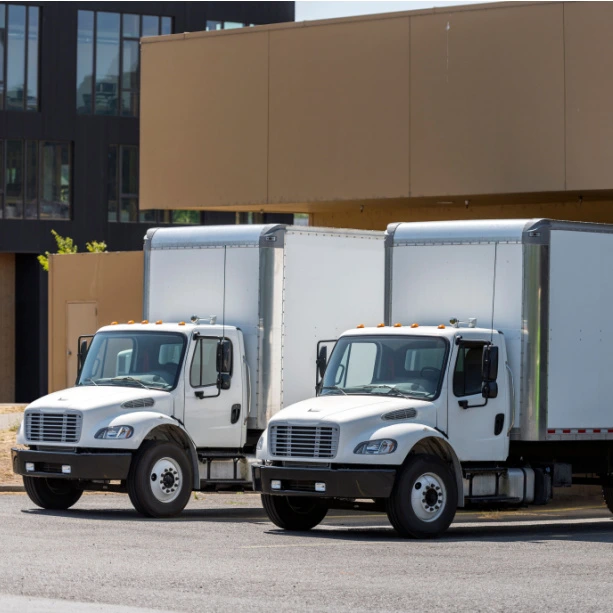As the logistics market grows more competitive, a company’s ability to effectively implement and utilize technology solutions is becoming more and more crucial to their long-term success. Asset tracking software stands as one of the many IoT solutions aiming to provide this value and success through its revolutionary operational visibility capabilities. By leveraging these systems, companies can now track, monitor, and analyze their asset movements in real time. This cutting-edge solution not only boosts operational efficiency but also helps in overcoming various logistical challenges. Let’s take a look at how asset tracking is used within logistics operations and what benefits it provides.
Join the AirFinder Difference!
- Innovation. Organizations can be freed up to innovate and bring more impactful products and services to market.
- Profitability. Increased profitability provides new opportunities to innovate and improve valuation.
- Digital Transformation. Discover competitive advantages, new revenue opportunities, improved customer relationships and increased efficiency.
What Does Asset Tracking for Logistics Operations Entail?
Asset tracking for logistics operations covers a wide range of functions that come together to provide full visibility across a variety of assets and the entirety of the logistics process. While some companies will emphasize certain elements over others based on their own unique needs, each plays a part in a larger whole; only by using these features simultaneously can the true value of asset tracking for logistics operations become fully realized and achieved.
Trailer Tracking
Trailer tracking involves employing asset tracking technology to monitor trailers as they progress throughout the supply chain. This process often entails installing tracking devices on the trailers, which then communicate with a central server via GPS, cellular, or satellite networks. These devices relay real-time location data, enhancing trailer visibility along the supply chain. Contrary to common misconceptions, trailer tracking and telematics are not the same thing, nor do they have the same goals or functions. While telematics focuses on monitoring truck and driver data for connected trailers, trailer tracking focuses on the trailers and their contents on a more granular level, even when those trailers are disconnected from a power source. The systems support each other by addressing each other’s blind spots for increased visibility and functionality.
Cargo Tracking
Cargo tracking is also a fundamental aspect of commercial asset tracking for logistics, involving the constant surveillance of goods and products as they travel from point A to point B. This surveillance provides real-time insights into their status, condition, and whereabouts. In a time where global supply chains span vast distances and encompass numerous stakeholders, precise knowledge of goods' locations is crucial for effective management. This visibility aids organizations in anticipating and addressing potential disruptions, such as delays or other disruptions, with greater agility and efficiency. For instance, if a shipment is delayed due to adverse weather conditions, fleet managers can swiftly adjust schedules and inform customers, thus minimizing the disruption's impact on both process execution and company reputation.
Pallet and Equipment Tracking
Asset tracking for logistics operations doesn’t just mean tracking the trailers and the products they contain; it also means tracking the returnable pallets and other portable equipment that travels with trailers. Each year, millions of pallets crisscross the country in shipment. Some return to their origin, while others disappear into the ether. Of those that do return, many arrive damaged, rendering them useless for future shipments. The financial toll of continually purchasing new pallets can swiftly erode profits. To safeguard against this, employing a returnable pallet tracking system is paramount. Similarly, portable equipment is often used for loading or unloading, making it easy to leave behind at a secondary location. These costs pile up even faster than returnable pallets, often consisting of high-value, specialized tools and calibrated equipment stocked in limited quantities.
Condition Monitoring
Asset condition monitoring safeguards the integrity and dependability of valuable equipment and resources. Essentially, it encompasses the ongoing tracking and assessment of the physical state of sensitive assets. For the transportation of these more delicate assets, sensors integrated into asset tracking tags can be utilized to monitor variables such as temperature, humidity, and even shock and acceleration. This ensures that all goods, particularly those subject to compliance regulations, remain in optimal conditions. For example, perishable items require precise temperature regulation to stave off spoilage. Through continual monitoring and swift intervention in case of any deviations, logistics firms can ensure the quality and safety of their products throughout the storage and transportation phases.
Custody Tracking
Traditionally, custody tracking involved manual bookkeeping to record which cargo was being shipped to which location on which trailer. Some companies may use barcodes or RFID scanners for this, but these methods are still manual, making them prone to errors and limited in effectiveness. You can only track cargo on a trailer if it's properly scanned during loading, and you can only confirm its arrival at the destination if it's scanned during unloading, which isn't always under your control. Custody tracking through IT asset tracking software, on the other hand, is fully automated and provides location reports even if you forget to check manually. Each trailer and its contents are tagged separately, with the contents reporting their presence to the trailer's tag. The trailer tag then reports its location and the assets in its proximity to the system platform, creating a precise record of the cargo and equipment traveling within a specific trailer.
Geofencing
Geofencing is a functionality enabling firms to establish virtual perimeters around designated geographical zones. This tool triggers alerts whenever a trailer crosses the predefined boundaries. Employing geofencing through asset tracking enables companies to prevent unauthorized removal of trailers from their premises It also provides insight to when trailers and other assets enter and exit certain locations, allowing fleet managers extended process visibility that they can use to make informed, real-time decisions about their daily operations. Used in conjunction with the custody feature, geofences can also help ensure that the right cargo is leaving with the right trailer by triggering automated checks when virtual boundaries are crossed.
The Benefits of Asset Tracking for Logistics Operations
Using these functions of asset tracking in tandem can provide a number of benefits for logistics operations. Again, while the benefits that are most apparent to you will vary depending on your unique circumstances and which aspects of the system you use the most, these benefits represent the fully realized potential of your asset tracking system.
Real-Time Location Visibility for Non-powered Assets
Helping logistics companies maintain visibility of assets is one of the biggest priorities of asset tracking, particularly since these companies often cover a wide range. Whether it's the trailer or its cargo, each asset plays a crucial role in the logistics chain. Without proper visibility, the risk of asset loss increases, leading to disruptions across the supply chain. With the revolutionary value provided by IoT asset tracking, gone are the days of relying on intermittent updates or estimated arrival times. With IoT devices, real-time tracking of assets is now a reality. Fleet managers can access precise location data for every asset, ensuring they are aware of their location at all times. This continuous data stream is invaluable, enabling timely deliveries, route optimization, and proactive measures to address potential delays.
Robust Data Collection for Predictive Analytics
The data provided by IoT devices attached to assets offers fleet managers invaluable insights for strategic decision-making. Through analysis of historical trends, fleet managers can make informed decisions, optimizing routes and preparing for future operations. This data-driven approach empowers logistics managers to enhance operational efficiency, impacting the company's bottom line significantly. By moving beyond reactive strategies, companies can anticipate and mitigate challenges or capitalize on opportunities proactively, effectively staying ahead of the competition. Utilizing data analytics to drive decisions also helps in reducing overall costs by aligning operations with anticipated scenarios, ensuring readiness to leverage emerging opportunities and navigate potential challenges.
Compliance with Health, Safety, and Industry Standards
Depending on the asset tracking system and tags you choose, these devices are equipped with embedded sensors that can monitor critical variables such as temperature, shock, and acceleration. This monitoring capability proves invaluable for companies transporting sensitive assets. Any deviations in these environmental factors trigger immediate alerts to fleet managers, enabling prompt action to rectify the situation. Additionally, asset tracking systems offer precise record-keeping and reporting functionalities. They generate detailed logs of asset movements, which are instrumental for compliance audits and regulatory submissions. This level of transparency not only instills confidence in regulatory bodies but also reassures stakeholders of a commitment to maintaining public health and industry standards.
Optimization of Asset Utilization
Asset tracking solutions have transformed logistics operations by providing real-time insights into usage patterns. This technology allows companies to monitor the movement and status of each individual asset with unparalleled accuracy. Whether it's tracking trailers on a lot or monitoring pallets used for shipping cargo, knowing their exact location enables proactive decision-making to optimize their usage. This data is invaluable for assessing asset performance, identifying underutilized resources, and streamlining operations. Companies can analyze this data to fine-tune their asset allocation strategies, ensuring that each resource is deployed efficiently and effectively and that additional resources are only sought when absolutely necessary.
Entrance/Exit Monitoring for Established Zones and Locations
Through geofencing features, asset tracking technology enables fleet managers to establish virtual perimeters on digital maps, triggering automatic notifications when trailers cross predefined geographic boundaries. This functionality proves invaluable for monitoring deliveries, ensuring adherence to specified routes, and promptly detecting any deviations from planned paths. By leveraging geofencing, organizations can enhance security protocols, mitigate the risk of unauthorized diversions, and strengthen overall operational oversight. The precision and automation inherent in geofencing not only enhance the efficiency of logistics operations but also result in cost savings by reducing fuel consumption and transit durations.
Asset Tracking: A Step Toward a Bright Future
Incorporating an asset tracking solution into your daily logistics processes signifies a strategic shift capable of revolutionizing your supply chain approach. The undeniable advantages of real-time visibility in logistics underscore the transformative potential of IoT. Embracing this technology isn't merely a progression; it signifies a monumental stride toward the future of your company's logistics operations. IoT represents revolution of not just technology, but for logistics operations as a whole, propelling your operations into an echelon of unparalleled efficiency and effectiveness. For further information on how IoT asset tracking software can provide value within logistics and supply chain operations, book a demo with our team today!




